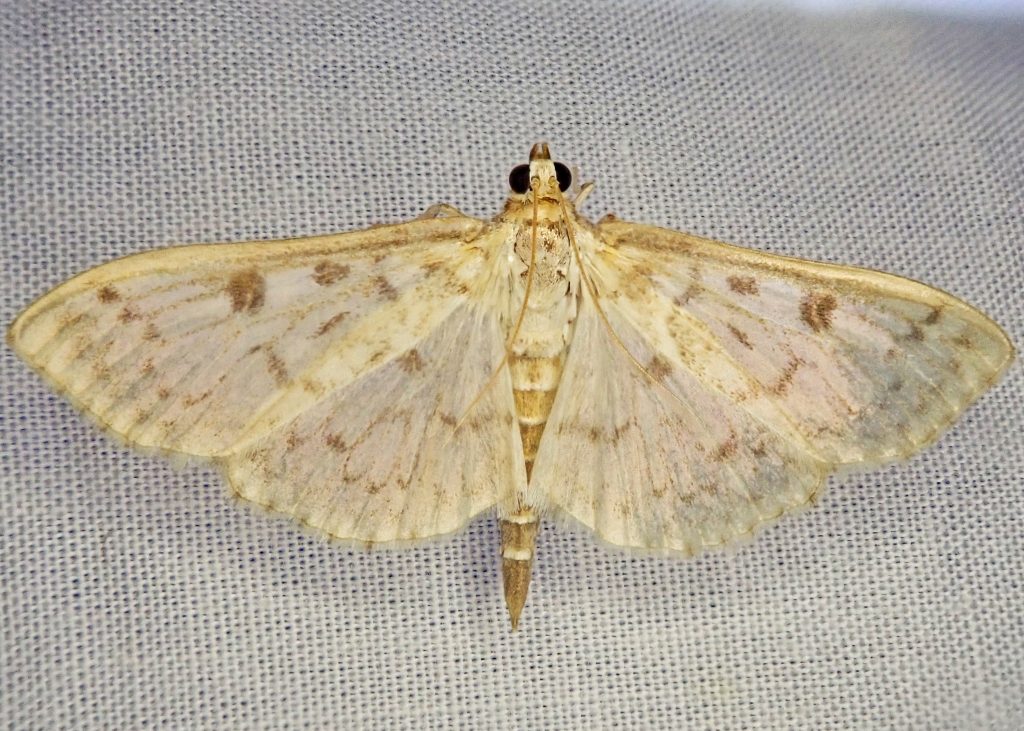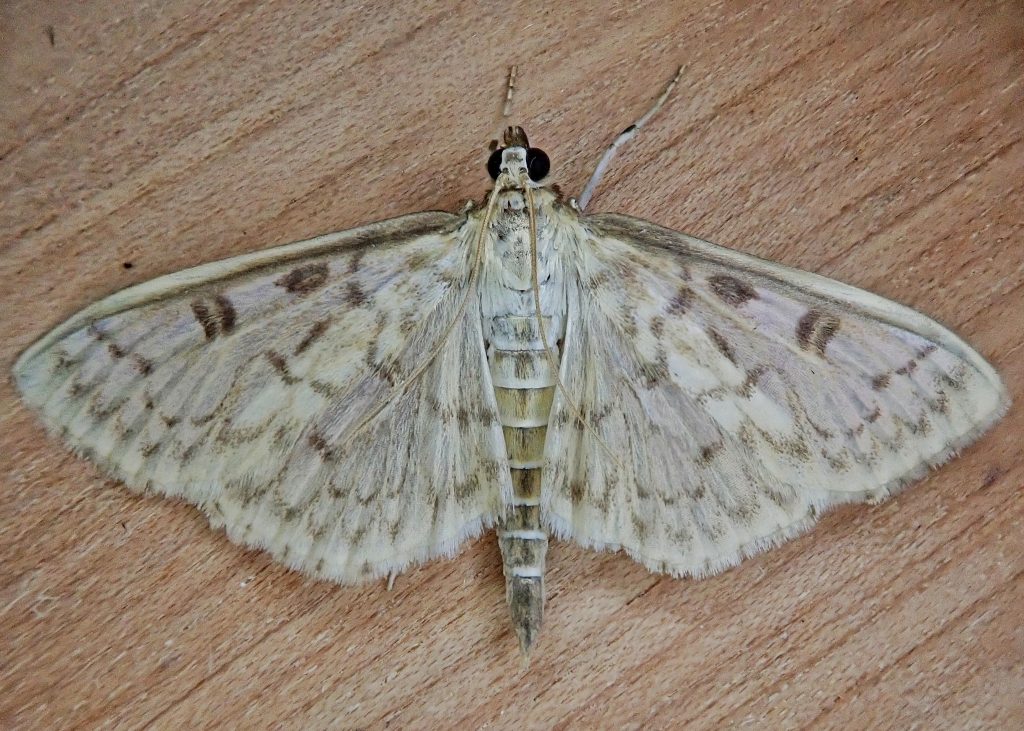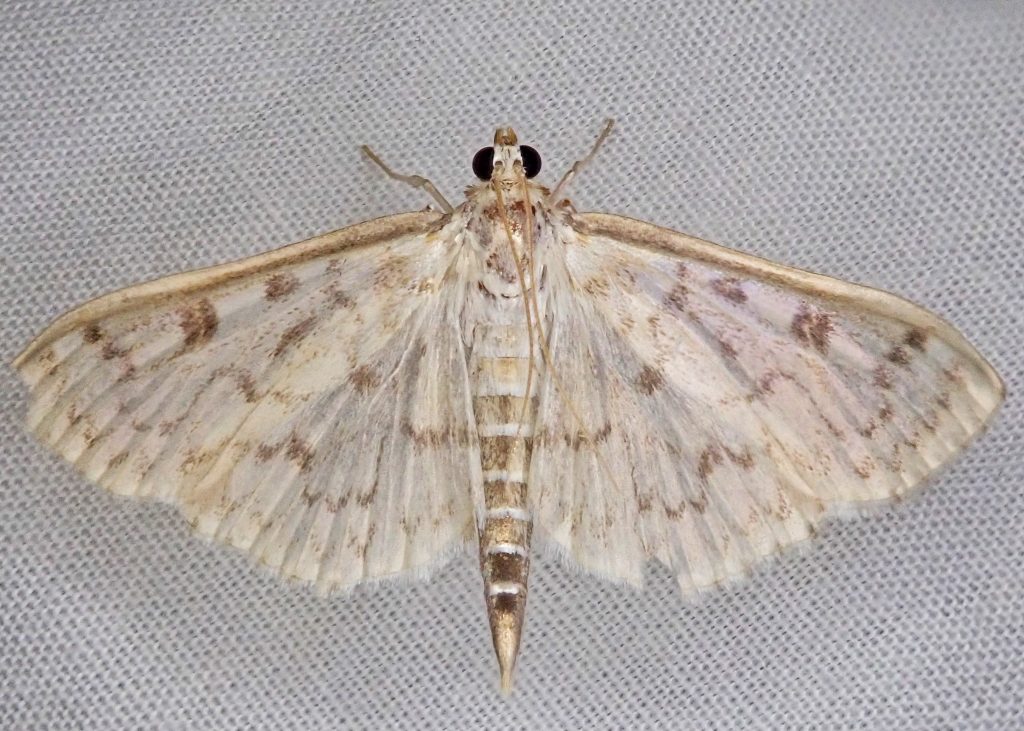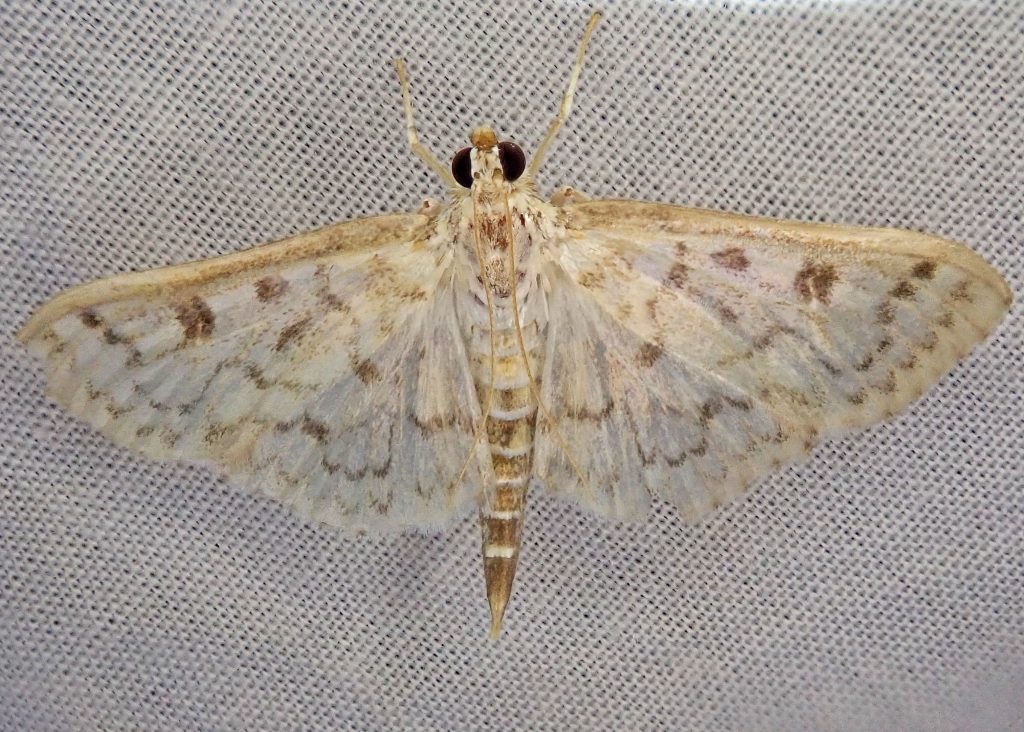
Herpetogramma abdominalis
Herpetogramma abdominalis is larger than most other Crambidae, with a forewing length of 12-15mm. They are a white moth with a goldish sheen, and a goldish costal area. The transverse lines are wavy and brown and often are not prominent in this species. The orbicular and reniform spots are also brown, and the reniform spot is often just two parallel lines.
They are common from mid to late summer in forested areas in sw Washington, but not much is known for sure about this species in our region because of longstanding taxonomic confusion between this moth and H. thestealis and H. pertextalis. The larvae, which are leaf rollers that cloak themselves for protection as they feed on the tender buds, are generalist feeders, and they are known to be fond of Urticaceae spp in the eastern US.

Surrounded by a faint golden aura, these moths are rather ethereal when illuminated by a headlamp as they flutter about languidly in the dark woods, a sight I see frequently when walking back and forth between my lights.

https://en.m.wikipedia.org/wiki/Herpetogramma_abdominalis
https://bugguide.net/node/view/19165
https://naldc.nal.usda.gov/download/45870/PDF
Size- FW length 12-15mm
Habitat- Forests and woodlands
Range- Not clear because of possible misidentification of specimens, but it seems to be primarily west of the Cascades in our region.
Eats- Larvae are generalists
Flight Season- June to September

2 thoughts on “Herpetogramma abdominalis”